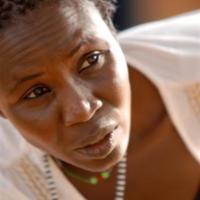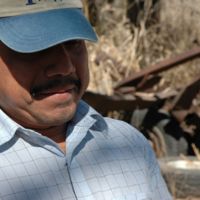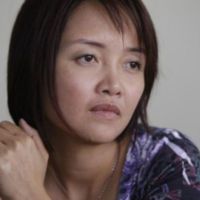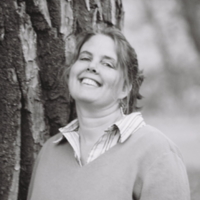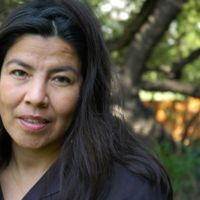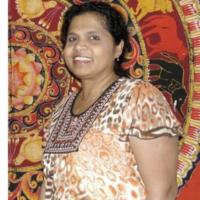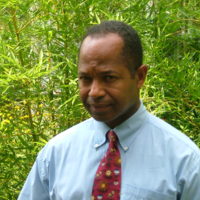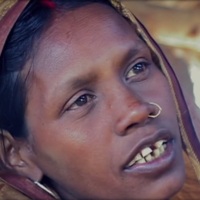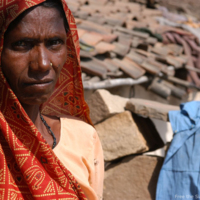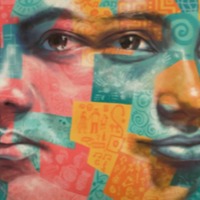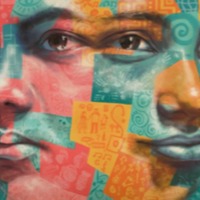
I feel cold metal on my wrists. I hear the click of the handcuffs. I see my hysterical toddler son being put into a police car and I wish I could say that the rest is a blur. As the police search me I feel terrified and alone. I know that I have drugs in my pocket and that I am going to jail. What I do not know is where they are taking my little boy who has autism, cannot communicate and has not left my side since the day he was born.
As the Guardian found when it interviewed me for a video investigation on human trafficking in San Diego – leaving the life is by no stretch an easy task. Oftentimes victims never have the chance to make it as a survivor; they die trying.
The degree of failure that I felt on that day is indescribable. Up to that point, because of my exploitation and drug use, my life had been a barrage of failures. This time was different, though. This time I not only failed myself, I failed my son as well.
Not every sad story has a tragic ending. Looking at the statistics, you might think I should be dead. My sad story includes a beginning that was riddled with family dysfunction including domestic violence, neglect, sexual abuse and exploitation. This traumatic upbringing was followed by drug abuse and forced prostitution. And yet here I am today, a sober, emancipated, successful and happy woman.
Years of childhood sexual abuse were, for me, the impetus to a hypersexuality during my adolescence. That set the stage for my many years of human trafficking, defined as forced labor or commercial sexual exploitation and prostitution. Human trafficking is defined as the exchange of money for services that have been obtained by force, fraud or coercion. I firmly believe that one cannot separate human trafficking from prostitution, CSEC (the commercial sexual exploitation of children) and the equally important issue of labor trafficking.
A perfect example of this is the fact that my second husband was my first trafficker, forcing me to have sex with other females for money. He also used my addiction as a tool of manipulation to ensure complete control over me and make sure that I did not leave. This lasted eight years.
Once I escaped my second husband, I soon found that I was no farther from the life without him than I was when I was with him. Traffickers can sense when someone is vulnerable and I was no exception. I went back and forth, sometimes under the control of a pimp and many times engaging in prostitution just to survive. Although I did not know it, I never even had a choice. It would be impossible to count how many times I was raped, assaulted, held hostage and almost died. I have PTSD and major anxiety as a result. Fortunately, today I have a much different story. One that is full of hope and potential.
After the loss of my son and the consequences of my arrest, I had two choices: either let my son disappear into the system or fight like hell to get him back and give him the life that we both deserved. In fall of 2011 I enrolled in San Diego City College as a re-entry student. At this point in my life I was a 35-year-old single parent with absolutely no job skills and no work experience to speak of. It was a humbling process to say the least, and challenging as well.
Is there a solution? When you are talking about an illicit industry as large as human trafficking, one has to acknowledge that there is no one solution to solve this horrific phenomenon. From what I have learned in my many years as an activist fighting human trafficking, I believe that the Nordic Model is one of our best prospects.
The Nordic Model criminalizes demand (the buyer and the pimp) for commercial sex, while decriminalizing individuals in prostitution and providing them with support services. Today, these services are scarce and make it almost impossible to convince a victim that there is something after “the life”. We are working to achieve this level of care in San Diego, but have not yet succeeded.
According to a study from Point Loma Nazarene University and University of San Diego, we have 28 beds and an estimated three to 8,000 victims. This is not the picture that saves lives; it is one that takes away almost all of the hope of transitioning from victim to survivor.
On 11 January 2016 I attended my first course at Point Loma Nazarene University. In 2015 the university established the Beauty for Ashes Scholarship Fund, a scholarship for victims of human trafficking. I decided to take a chance and apply, and soon after I became the first recipient of the new scholarship. As far as I know, this is the only scholarship of its kind that is specifically for sex trafficking survivors.
I am grateful to say that after 14 months, I was granted custody of my son and he is a flourishing nine-year-old boy with the most amazing personality and he is resilient as well. I am not going to lie: raising a child with autism has been one of my biggest challenges. However, it has also been the biggest blessing of my life.
He and I are best friends and have a bond that was not altered by the year that we were separated. Instead, because of the intervention we received from child welfare we are so much stronger and I have a significantly enhanced awareness of the degree of change that the human spirit is capable of. Both gifts that cannot be bought.
I am the exception to the rule. I am one of a handful of victims that has survived to lead a different life. Now, I am determined to be part of solution: to raise awareness and to agitate for a changes in policy and the law. I hope you will lend me your encouragement.
As written for the Guardian
